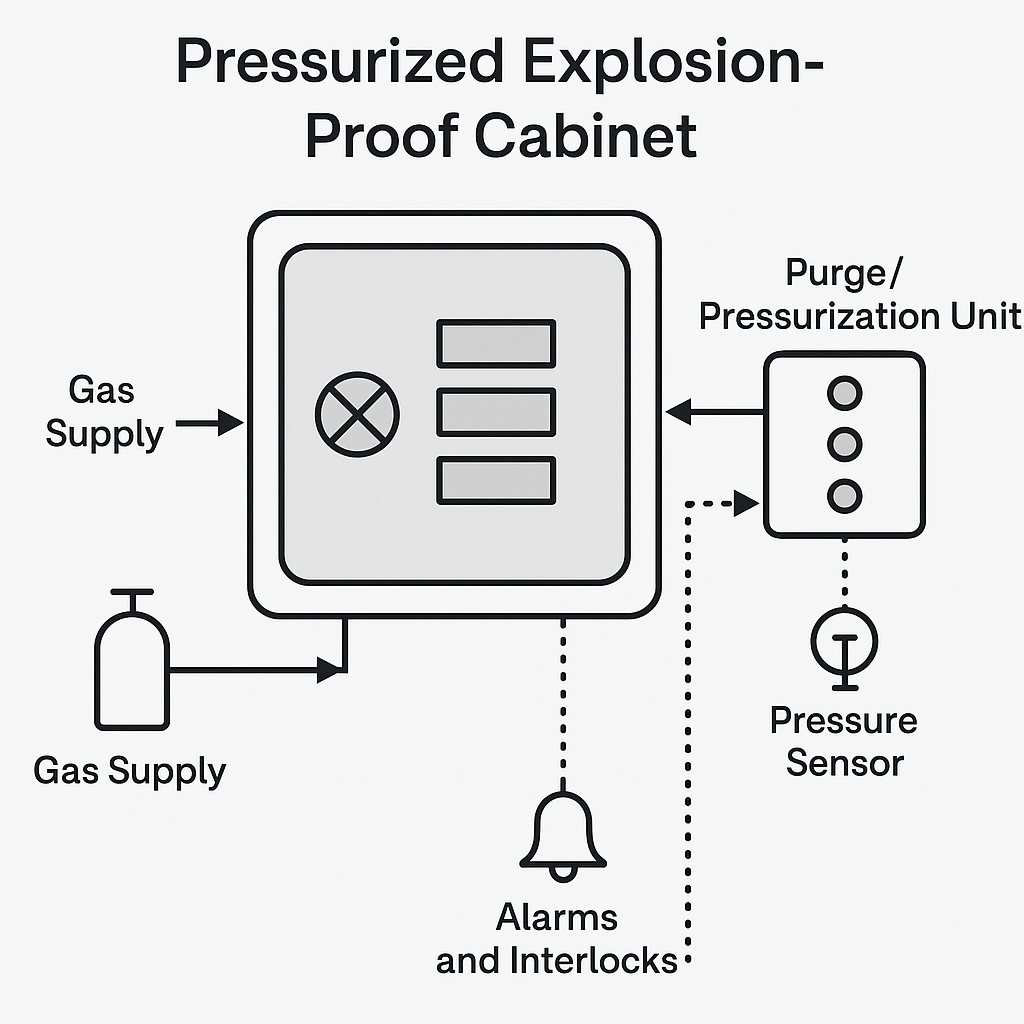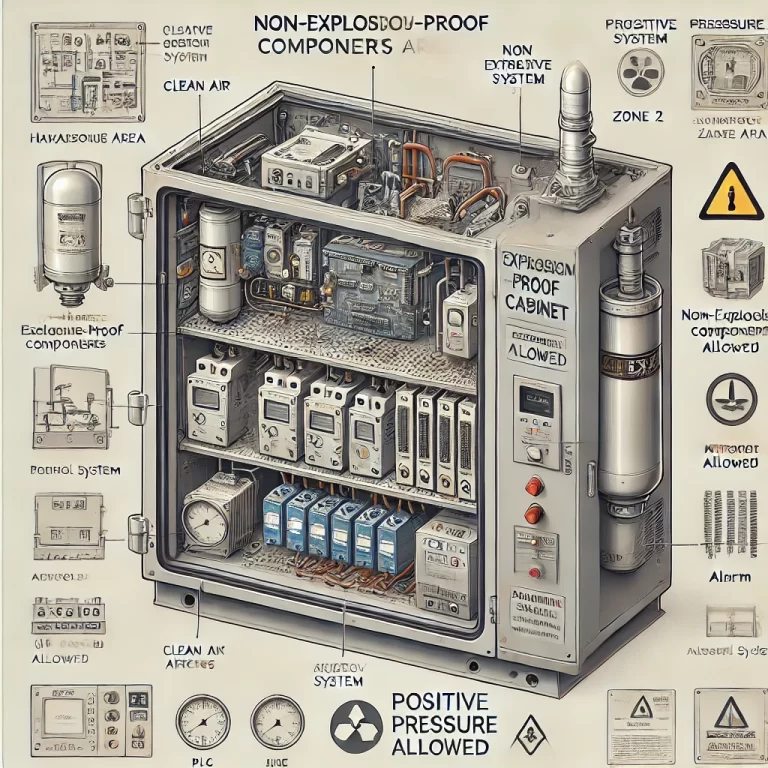In hazardous industrial environments where explosive gases or vapors may be present, explosion protection is a critical requirement for electrical equipment. One common method of explosion protection is the pressurized enclosure, also known as pressurization type “p” protection. This article explains whether internal components housed in a pressurized explosion-proof cabinet (Ex p cabinet) must themselves be explosion-proof, and under what conditions they can remain as standard industrial-grade components.
1. What Is a Pressurized Explosion-Proof Cabinet (Ex p)?
A pressurized explosion-proof cabinet is a sealed enclosure designed to prevent the ingress of explosive atmospheres by maintaining a positive internal pressure relative to the surrounding hazardous environment. Clean air or inert gas is introduced and regulated to ensure the interior is free from potentially explosive gases.
This method is standardized under:
IEC 60079-2 (Explosive Atmospheres – Part 2: Protection by Pressurization “p”)
GB/T 3836.5-2021 (China equivalent)

2. Main Components of an Ex p Cabinet System
A typical pressurized enclosure includes:
Sealed cabinet body
Purge/pressurization unit
Pressure sensors and regulators
Alarms and interlocks
Optional gas supply system (compressed air, nitrogen)
The goal is to create and maintain a non-explosive atmosphere inside the cabinet.
3. Do Internal Components Need to Be Explosion-Proof?
In general, no—if the Ex p system is fully compliant and functioning properly.
✔️ Conditions Where Internal Components Do Not Need to Be Explosion-Proof:
According to IEC 60079-2 and similar standards, non-explosion-proof components can be safely used inside a pressurized enclosure, provided the following conditions are met:
Purge and Pressurization: Before energization, the enclosure must be thoroughly purged with clean air or inert gas to eliminate any residual hazardous gases.
Positive Pressure Maintenance: A continuous overpressure (typically ≥50 Pa) is maintained during operation.
Monitoring and Interlocking:
If pressure drops below a set threshold, the system must automatically shut down power to the internal equipment.
Audible/visual alarms must notify operators of any system faults.
These protections ensure that even though internal components are not explosion-proof, they are isolated from the hazardous external atmosphere.

4. When Must Internal Components Be Explosion-Proof?
There are situations where internal explosion-proof components may still be necessary:
| Scenario | Action Required |
|---|---|
| The cabinet cannot maintain the required positive pressure | Use explosion-proof certified components inside |
| There is no auto shutdown or alarm system in case of pressure loss | Use explosion-proof components or improve the system |
| Components generate high temperatures or arcs that could ignite residual gas during purge phase | Evaluate the need for certified components |
| Temporary access or opening during operation | May require explosion-proof parts or safe shutdown procedures |
5. Benefits of Using a Pressurized Cabinet
✅ Allows use of standard industrial components in hazardous areas
✅ Reduces equipment procurement costs
✅ Simplifies maintenance and upgrades
✅ Suitable for complex control systems and instrumentation panels
This method is particularly favored for large control cabinets, DCS panels, motor control centers, or HMI terminals used in hazardous zones (e.g., Zone 1 or Zone 2).

6. Conclusion
In a fully compliant and operational pressurized explosion-proof cabinet (Ex p), the internal components do not need to be explosion-proof. This is one of the key advantages of Ex p protection, enabling the use of standard components in otherwise hazardous areas.
However, designers and operators must strictly adhere to applicable standards like IEC 60079-2 or GB/T 3836.5, ensuring that purge, pressure maintenance, interlocking, and monitoring systems are correctly implemented and regularly tested.
